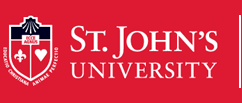Date of Award
2021
Document Type
Dissertation
Degree Name
Education (Ph.D)
Department
Administrative and Instructional Leadership
First Advisor
Rosalba Corrado DelVecchio
Second Advisor
Barbara Cozza
Third Advisor
Stephen Kotok
Abstract
The purpose of this research study was to examine the impact of teacher collaboration in an early college high school (ECHS) and a traditional high school as it relates to student
achievement among high school students and on other factors that distinguish an ECHS
from a traditional high school. The ECHS refers to a specific high school model created
to serve traditionally underrepresented students in higher education. Students enroll in
dual credit courses, most often beginning sophomore year. A traditional high school
setting refers to courses that offer students the high school credits and prepare them for
the basic state assessments that all students must acquire for New York State graduation.
Much of the research suggests that a traditional high school prepares only some students
for post-secondary education, as opposed to an ECHS, which prepares all students for
post-secondary education. High schools designed to prepare all students for college
success look dramatically different from those that prepare only a portion of students.
These high schools have certain key characteristics. The most important and perhaps the
most often overlooked is an intellectually coherent program of study based on a
curriculum that grows progressively more challenging over the years (Harris et al,, 2010).
This is a concurrent exploratory mixed methods design. This study combined
elements of quantitative and qualitative methods. For the qualitative part of this study,
triangulation of data included, but was not limited to, interviews and observations. The
participants in this study consisted of 140 teachers and support staff (i.e., guidance
counselors, school psychologist, social workers, and community mental health providers)
with years of school experience ranging from new (1 to 5 years) to veteran (over 15
years), serving in a large urban school district during the 2018–2019 school year. For the
quantitative part of this study, data examined from the two high schools included, among
other sources, the New York State Algebra I test results of nearly 687 students. Teacher
survey data was collected using Olivier and Hipp’s (2010) Professional Learning
Community Assessment–Revised (PLCA–R) survey instrument, which deconstructs
professional learning communities (PLCs) into the same six elements that are the pillars
of an ECHS. These two forms of data were used to answer each of the questions that are
guiding this study.
An analysis of variance (one-way ANOVA) was used to determine a difference, if
any, between an ECHS and a traditional high school in both PLCA–R and New York
State assessment data. If that is the case, a hierarchical linear modeling (HLM) was used
to determine whether any of these differences could be attributed to any of the six
PLCA–R elements.
Recommended Citation
Hassan, Ed.D., Matel Hanna, "EXAMINING THE LEARNING COMMUNITIES OF TWO HIGH SCHOOLS IN AN URBAN SCHOOL DISTRICT" (2021). Theses and Dissertations. 156.
https://scholar.stjohns.edu/theses_dissertations/156
